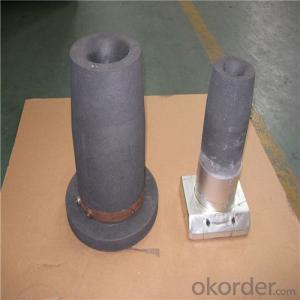When we talk about graphite electrodes, some might think of them as just another industrial material. But to those in the know, they are so much more. They are the unsung heroes of the metallurgical world, playing a crucial role in the production of steel and other metals. And when it comes to imports, the global trade perspective is as fascinating as it is complex.
Let’s dive right in, shall we? The global trade of graphite electrodes has been on a rollercoaster ride, with ups and downs that would make any trader’s heart race. From the soaring heights of demand to the sudden drops that catch everyone by surprise, it’s a market that’s as dynamic as it is unpredictable.
Now, you might be wondering why these graphite electrodes are so important. Well, they’re not just any ordinary material. They’re made from pure graphite, which gives them their unique properties. They can withstand extreme temperatures, they’re resistant to oxidation, and they have excellent electrical conductivity. These qualities make them perfect for use in electric arc furnaces, where they help to melt scrap metal and transform it into new steel.
But it’s not just the steel industry that relies on these electrodes. They’re also used in the production of silicon metal, ferroalloys, and even in the manufacturing of refractory materials. The versatility of graphite electrodes is truly remarkable, and their applications are as diverse as the industries they serve.
As we look at the global trade landscape, one thing becomes clear: the demand for graphite electrodes is on the rise. With the growth of the global economy and the increasing demand for steel and other metals, the need for these electrodes is only going to grow. And as this demand increases, so does the competition among producers and importers.
The competition is fierce, with countries like China, Russia, and Japan leading the pack. These countries have been major players in the graphite electrode market for years, and their dominance is a testament to their production capabilities and strategic positioning. But it’s not just the big players that are making waves. Smaller countries are also getting in on the action, looking to capitalize on the growing demand for these essential materials.
One of the most interesting aspects of the graphite electrode trade is the way it’s shaped by economic and political factors. Changes in trade policies, tariffs, and even geopolitical tensions can have a significant impact on the flow of these materials around the world. For example, a trade war between two major economies could lead to a sudden increase in the price of graphite electrodes, making them less accessible for some countries.
But it’s not all doom and gloom. There are also opportunities to be found in this ever-changing market. For importers and producers alike, staying informed about the latest trends and developments is key to success. By understanding the factors that influence the graphite electrode market, businesses can make informed decisions and position themselves for growth.
And let’s not forget about the environmental aspect. As the world becomes more conscious of its ecological footprint, the demand for sustainable and environmentally friendly materials is on the rise. Graphite electrodes, with their ability to be recycled and reused, fit perfectly into this trend. This presents a unique opportunity for businesses to not only meet the growing demand for these materials but also to contribute to a more sustainable future.
In conclusion, the global trade of graphite electrodes is a fascinating and complex world. It’s a world where supply and demand, competition, and environmental concerns all play a role. For those involved in this trade, it’s a world that requires a keen eye for detail, a deep understanding of the market, and a willingness to adapt to the ever-changing landscape. So, whether you’re a producer, an importer, or just someone with a curiosity for the inner workings of global trade, the graphite electrode market is a story worth following.

